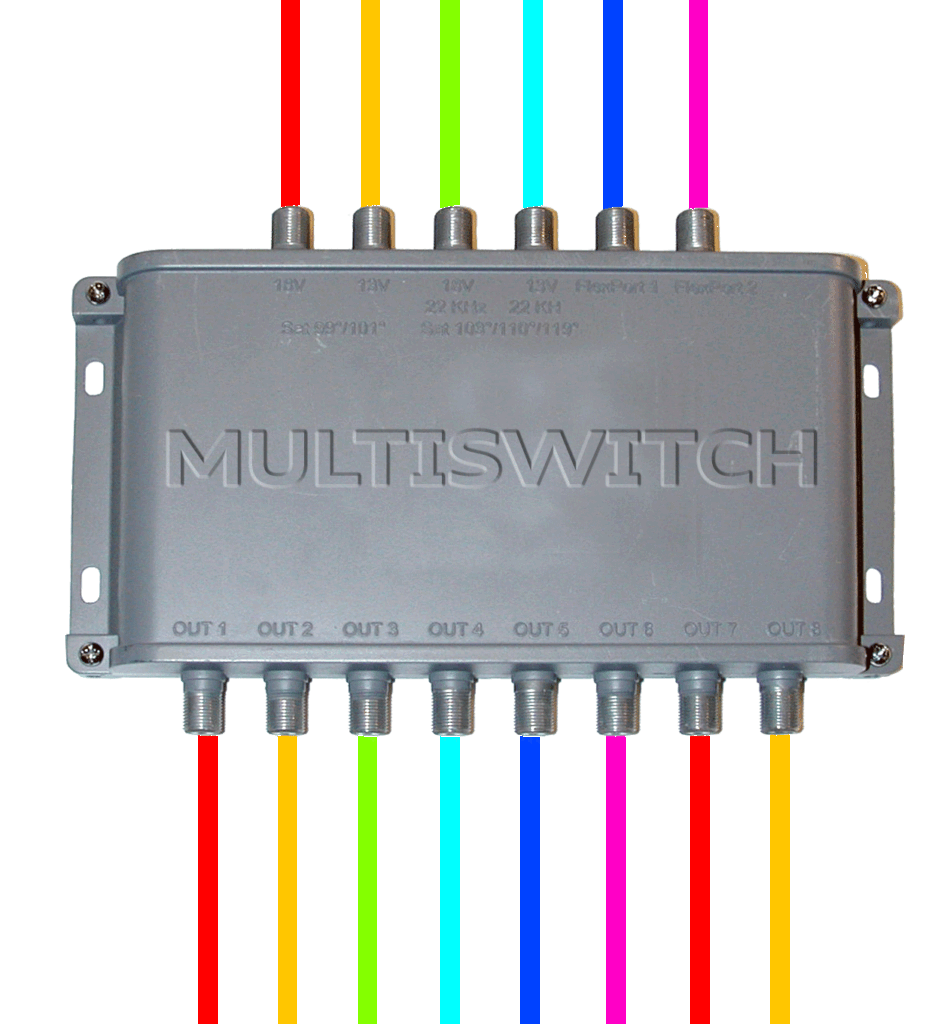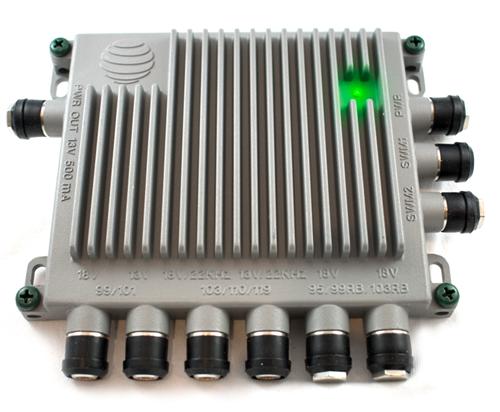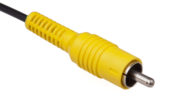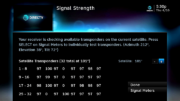Let’s say for a second that you are using an older satellite dish. You know, a plain old round one. It has two lines coming out of it, but you want to run three receivers. What do you do?
You might have tried using a splitter like you see at home stores, and you noticed it didn’t work. What you really want is a multiswitch. Multiswitches have evolved in recent years from being relatively simple and inexpensive devices into specialized, provider-centric ones. In order to understand why, you first need to understand the difference between a splitter and a multiswitch.
Here’s what you need to know: a satellite dish, any satellite dish designed for the US, will actually put out up to six different kinds of signals. This allows your satellite company to carry a lot more channels over the same wire. The science behind all these different signals isn’t important right now, but this whole scheme is the reason that you can’t just use a splitter. Your receiver sends a signal back to the dish asking for one of those six types of signals, and that signal type — only that signal type — goes down the wire. If two receivers are on the same line then they try to request different signal types, it doesn’t work.
The answer is a multiswitch.

The answer is a multiswitch. With a multiswitch, you feed all the lines from the dish in, and then complicated electronics in the multiswitch help send the right signals down the right lines. Two receivers can share the same signal type because the multiswitch is in the middle, making sure everything works right.
For example, take our plain round dish. It has two wires out and can send two different types of signals. (We’ll call them 13 and 18, because of the voltage they use.) When you feed both lines into a multiswitch, you can connect as many receivers as you want because the multiswitch is getting both the 13 and 18 signals and when a receiver asks for one, the multiswitch gives it to them.
Provider-centric multiswitches
There are two problems with a “stock-standard” multiswitch. The first is that it requires “home-run” wiring. In other words, you need to run all the lines back to it from wherever the receivers are. If you have four receivers that are close and four that are further away, you need to run a wire to each and four of those runs are going to be quite long.
The other issue is that in the US, DVRs have evolved to have lots of tuners in them. DIRECTV’s top-of-the-line DVR can record 7 programs at once and DISH’s top-end device can record 16 at once. In a traditional multiswitch you would need one line for every recording tuner. That would mean 16 cables run to a DISH Hopper 3, which would make swiss cheese of your walls.
In order to address these unpopular problems, providers have designed custom multiswitches. Both DIRECTV and DISH have developed multiswitches with technology to allow one line to go to each device regardless of how many tuners are in use. Both allow for splitters to be used along the line so that you don’t need to run every cable back to the multiswitch. And, both have developed systems to allow network information to travel on the same cable as the TV signal.
The only thing is, the solutions these companies have developed are totally different. They don’t work at all except with their own tech. This has the effect of making multiswitches expensive and provider-specific. Most people don’t care, but if you have a boat that travels from country to country this can be a big problem. You may need a separate wiring scheme for every country you visit. That can be a lot of complexity.
Let us make it easy for you
Signal Connect, the marine and commercial arm of Solid Signal, has solutions designed to make large installs simple. Whether you’re simply building the “mancave” of your dreams or creating a video distribution for an international cruise ship, we can help! We’re here to make it easy for you.
Call the experts and we’ll get to work. We’re here at 888-233-7563 during East Coast business hours. Why only at that time? Our staff is all based in Novi, Michigan. We don’t have overseas call centers. We have people who really know their stuff. Call us and let us prove it to you. If it’s after hours, no problem! Fill out the form below and we’ll get right back to you!





